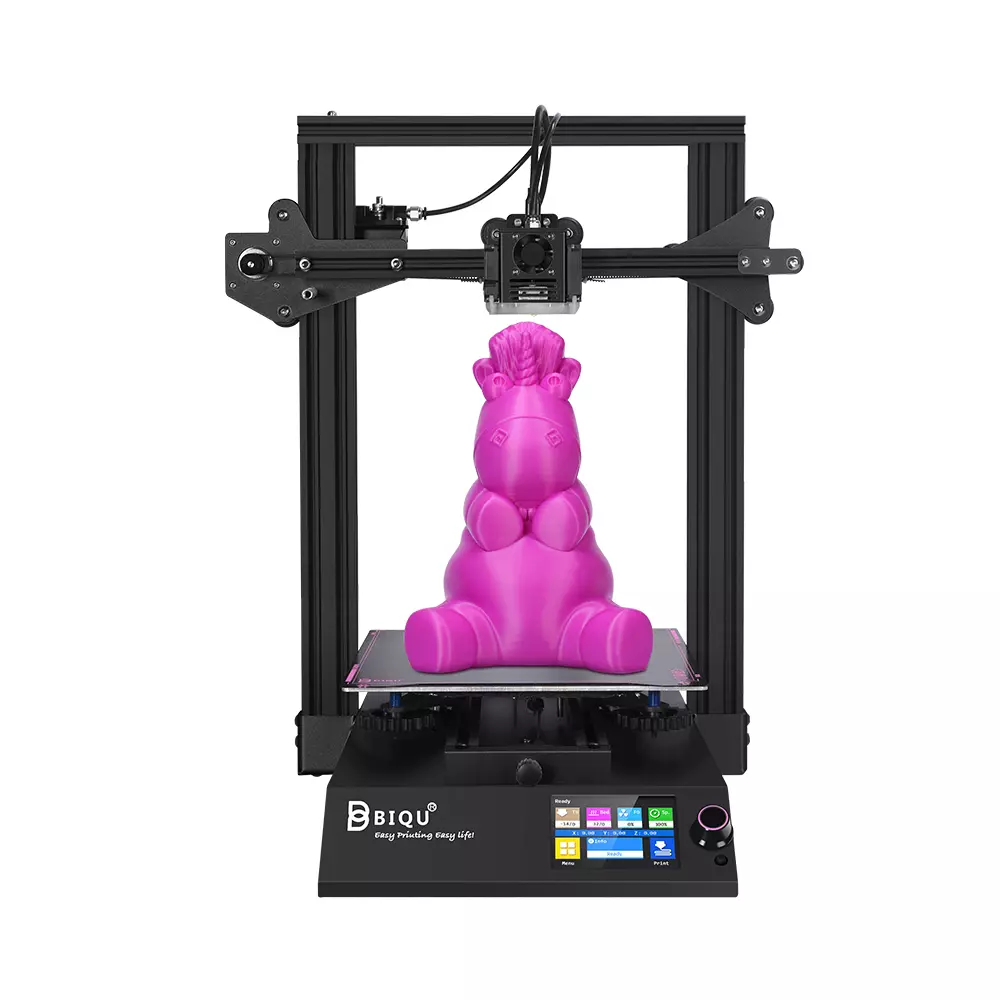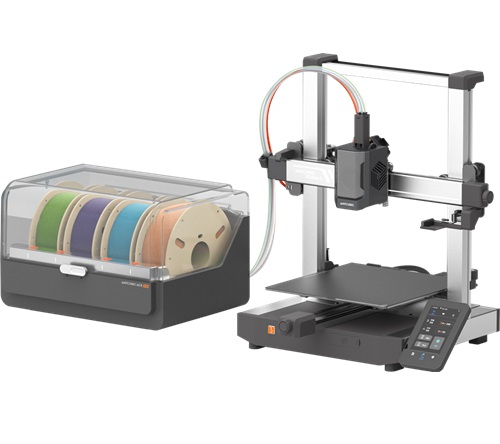Compare BIQU B1 vs Kobra 3 Combo
Comparison between the best 3D printers
Choose the best 3D printer at the best price. The cheapest 3D printers are here.
Buy a 3D printer here with 3D Fila.
 |
 |
|
| Model | BIQU B1 |
Kobra 3 Combo[BUY Kobra 3 Combo] |
| Printing Material | Filament | Filament |
| Buy Filament for BigTreeTech BIQU B1 | Buy Filament forAnycubic Kobra 3 Combo | |
| Estimated price | $269,00 | $349,00 |
| Manufacturer | BigTreeTech | Anycubic |
| Release Year | 2020 | 2024 |
| Print Volume [mm] | 235x235x270 | 250x250x260 |
| Printer Size [mm] | 412x402x492 | 452x504x483 |
| Weight [kg] | 8,00 | 9,2 |
| Power Loss Recovery | YES | YES |
| Enclosed printer | NO | NO |
| Bed Leveling | Manual | Automatic |
| Filament End Sensor | YES | YES |
| Bed type | Heated | Heated |
| Power supply system | Bowden | Direct Drive |
| Standard nozzle | 0,4 | 0,4 |
| Maximum Nozzle Temperature [°C] | 250 | 300 |
| Maximum Bed Temperature [°C] | 100 | 110 |
| Maximum printing speed [mm/s] | 100 | 600 |
| Filament holder | YES | YES |
| Camera for supervision | NO | NO |
| Recommended filaments | PLA, TPU, ABS, PETG | PLA, PETG, ABS, PP, HIPS |
| Recommended slicers | Cura, Simplify, Slic3r | Anycubic Slicer, Cura, Orca Slicer |
| Maximum Resolution [mm] | 0,1 | 0,1 |
| Processor | 32 Bits BTT SKR V 1.4 | 32 bits |
| Display | Touchscreen TFT 3,5'' | Touchscreen 4,3'' |
| Power Supply | 24V / 360W | 400 W |
| Connectivity | SD / USB | USB, Wi-Fi, Cloud |
| Operating systems | Windows, Mac, Linux | Windows, Linux, Macbook |
| Date of registration in the system | 2021-04-14 | 2024-06-27 |
| Release date | 2020 | 2024 |
| Extra features | The BIQU B1 is an advanced 3D printer with a silent 32-bit BTT SKR V1.4 motherboard and ARM Cortex-M3 CPU, offering DIY interfaces (I2C, SPI, WiFi) and dual Z-axis. Its dual BTT B1 TFT35 V3.0 operating system allows real-time monitoring and multiple printing modes, including G-code visualization effects. It stands out for its BIQU SSS (Super Spring Steel), ensuring easy model adhesion and simplified removal, with the possibility of using it on both sides. It includes a filament sensor, automatically pausing printing in case of filament breakage. The multicolored RGB lights integrated into the hotend allow you to view the printing status even at night. Additional notes include the need for a BIQU-specific Type-C cable and extra interfaces for smart filament sensor and BL Touch. | The Anycubic Kobra 3 Combo offers advanced features, including multi-filament printing with the ACE (Anycubic Color Engine) system, allowing for quick switching of up to four filaments. It features automatic bed leveling, nozzle clogging detection, and integrated filament drying during printing. The printer supports technical materials such as ABS, ASA, Nylon, and PC, thanks to the hotend that reaches 300°C and the heated bed up to 110°C. In addition, it has a 4.3-inch touchscreen and compatibility with various slicers such as Anycubic Slicer, Cura, and Orca Slicer. |
| Support for multiple colors and materials (AMS and CFS) | NO | YES |
Notes * |
||
| Cost-benefit | 7 / 10 | 8 / 10 |
| Hardware | 2 / 10 | 4 / 10 |
| Tela | . | . |
| Print volume | 3 / 10 | 4 / 10 |
| Performance | 1 / 10 | 5 / 10 |
| [BUY Kobra 3 Combo] |
Conclusion |
| In conclusion, both the BIQU B1 and Anycubic Kobra 3 Combo cater to different user needs and budgets in the 3D printing market. The BIQU B1 provides an economical option for hobbyists and those new to 3D printing, offering essential features like filament sensors and easy model removal, but it falls short in performance and versatility compared to the Anycubic model. On the other hand, the Kobra 3 Combo, though more expensive, boasts superior features such as automatic bed leveling, faster maximum printing speeds, and multi-filament capabilities. Its advanced technology makes it better suited for users looking for high-quality prints with a variety of materials. Ultimately, for those prioritizing budget and simplicity, the BIQU B1 represents a strong choice. For users who are willing to invest a little more for advanced functionality and enhanced performance, the Anycubic Kobra 3 Combo stands out as the top contender. The decision largely hinges on the specific needs, preferences, and budget of the user. |

